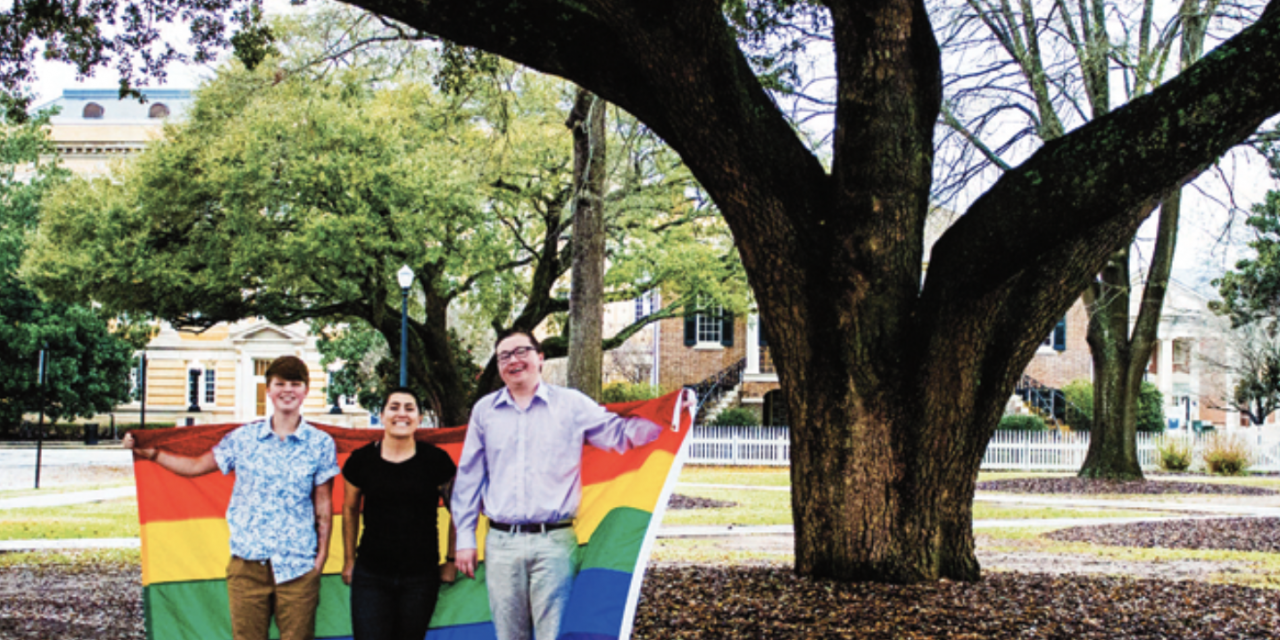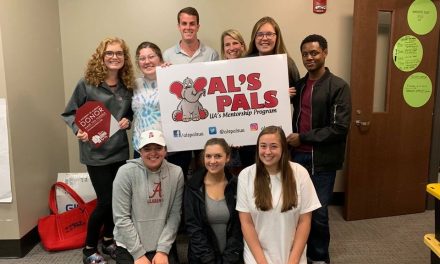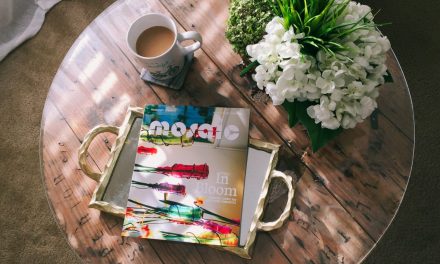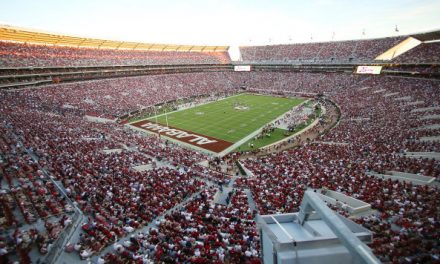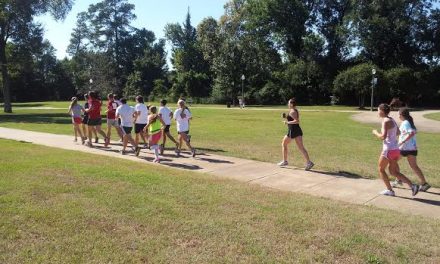STORY BY
Cora Kangas
PHOTOS BY
Cora Kangas
DESIGN BY
Nicole Leva
Being a part of a marginalized community can be daunting no matter where you end up. This is true of the LGBTQ+ community, where identity can be hidden and feel suppressed. The University of Alabama, however, is a rather supportive place. Among a variety of groups and organizations, young queer people on campus can quickly find a group to rely on. Overall, the LGBTQ+ community is optimistic as they head into the future of what the LGBTQ+ experience will be like both on and off all college campuses. They hope that this will lead to a general acceptance of every part of the spectrum, regardless of sexual or gender identity. These UA students are here to share their stories.

Matt Klein, Junior
Collaborative Special Education
Allen, TX
Klein comes from a more progressive suburb of Dallas, Texas, where he didn’t experience much opposition to who he was. When he made the transition to UA, he didn’t feel much change in the way he could live his life.
“I kind of noticed that there were these almost separate spheres of what it’s like to be queer.” He noticed in the two parts of his life, on versus off campus. “On campus, it’s usually pretty fine because we are a university that is very largely out of state,” Klein said. “Then in a way, when you go off campus, you encounter more of that homophobic attitude, just because this isn’t a very progressive area of the country.”
Klein felt the least comfortable during the wake of the 2016 presidential election. “Follow- ing the election, I think relations got a little more contentious,” he said. “I perceive a little more hostility toward LGBTQ+ people, because I feel like they [those purveying the hostility] were emboldened.”
Other than that, Klein has noticed very few other incidences of purposeful hostility. He has experienced lots of support from those around him and hopes to continue to receive that type of support wherever his future takes him. As for his time on campus, he says that it has been a great ride.
LGBTQ+ RESOURCES
On Campus
Safezone, https://safezone.sa.ua.edu/
Spectrum, https://ua.campuslabs.com/engage/organization/spectrum
GRADient, https://ua.campuslabs.com/engage/organization/GRADient
The Women and Gender Resource Center, https://wgrc.sa.ua.edu/
Off Campus
Druid City Pride (Tuscaloosa), https://www.druidcitypride.org/
PFlag Tuscaloosa, https://www.facebook.com/groups/1848138355199406/
Five Horizons Health Services, http://www.fivehorizons.org/

Oli Cannon, Sophomore
Chemical Engineering/ STEM MBA
Oxford, PA
Cannon is on campus for his second year at UA’s Honors College, and is finally beginning to feel comfortable in his own identity. He identifies as non-binary but prefers masculine pronouns. These pronouns are how he presents himself and how he feels most comfortable. Cannon was assigned female at birth and has been attracted to girls his entire life. However, he hasn’t experienced, for himself, what it is like being in a LGBTQ+ relationship on campus.
“I haven’t really had a long-term romantic relationship here,” Cannon said. “I don’t know what it’s like to hold hands with a girl and how people react to that.”
But even in looking for colleges, Cannon prioritized finding somewhere that had a program for the LGBTQ+ community. He learned about Safe Zone via Facebook, and when he toured campus, was shown around by a member of the group. Safezone is the on-campus resource center for LGBTQ+ students. There is an office with graduate assistants there to listen and a lounge with many students who are always willing to be a friend.
“When I saw a person living their life in this environment, someone like me, it was game-changing. That was the first day I was so uncontainably excited for college,” Cannon said.
He has since retained that joy and found the people he knows will be a part of his life for a long time to come. He has found, contrary to his initial expectations of the south, the university atmosphere is rather accepting of who he is, and he typically doesn’t have to worry about how he expresses himself.
Lizzie, Emerson, Third-year Ph.D Student
Higher Education Administration

Conway, AR
Emerson is the graduate assistant for the UA’s Safe Zone program, and identifies as demisexual, someone who does not experience physical attraction until a strong emotional connection has been formed and polysexual, attraction to some but not all genders. She has remained in this position for two and a half years, since the beginning of her Ph.D program. Her basis of understanding on-campus issues comes from working in the continuously-developing Safe Zone resource office.
“When I was first hired, my job was to coordinate the Ally Training Program and to hold about 16 of- fice hours a week,” she said. “By the end of that year, we had logged a bunch more office visits than we were used to logging, specifically crisis-related visits.”
The ally training program is a place where people who are in or out of the LGBTQ+ community can get information on how to fluidly accept members of the LGBTQ+ community. A large part of the training focuses on respecting pronouns for non-binary and transgender identifying students, as well as learning about what different terms in the LGBTQ+ community mean.
Emerson’s job rapidly evolved with the addition of the student lounge next to her office. This turned her sometimes isolating job, into a community-based program where she would coordinate activities for students to participate in.
The only real hurdles she has seen so far are problems she believes have always been around.
“One of the first questions I asked the outgoing graduate assistant was, ‘how often do you get these crisis visits and what do I do when it happens?’” Emerson said. “I think at that point they had logged about nine, the next year we got 12, the next year we got 21. This year, starting at the beginning of this semester, we had 25.”
She supports that, although the data makes it seem as though things are getting worse, it is only the wider visibility of the program that has caused the increase. No matter how great that visibility is, she knows a more visible program means more resources, more staff and more training; none of which are easy to come by.

